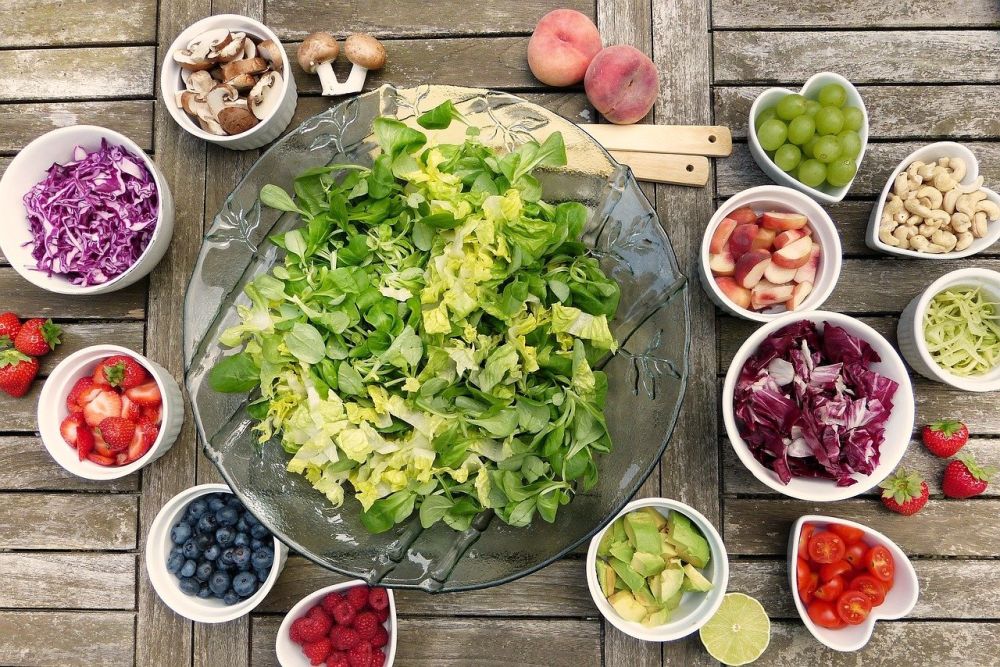Introduction
Being as healthy as possible can help you live a long and happy life, and enjoying food, whether it’s a family supper at home, or a meal out with good friends contributes greatly to our overall well-being.
As many of us know all too well, though, the foods that taste the best, are often the worst for us! And it’s precisely because they are so very delicious that we continue to eat them, even when we know that our health and waistline may suffer in the long run.
Of course, no one should deny themselves the pleasure of enjoying tasty food but understanding the difference between healthy and unhealthy food can help you make good choices “food to eat & avoid” when it comes to planning nutritious and delicious meals for yourself and your family.
What Are Healthy Foods?
The best foods are those that offer a range of the nutrients your body needs for optimal well-being, keeping you strong, active, and at a healthy weight. They include fruits, vegetables, whole grains, lean proteins, and healthy fats such as:
- – Apples, bananas, blueberries
- – Broccoli, spinach, sweet potatoes
- – Oats, quinoa, brown rice
- – White-flesh fish, tofu, turkey
- – Olive oil, avocados, walnuts
The benefits of including these foods in your daily diet are numerous and many people find that once they begin eating them regularly, their taste buds readjust, and the desire for the unhealthy foods they once craved starts to diminish. Of course, one of the main advantages of making the switch to a healthier diet is that the risk of developing health conditions like heart disease, diabetes, and arthritis may be reduced or, at the very least, can be managed more successfully.
What Are Unhealthy Foods?
Unhealthy foods are generally those that are very low in nutrients, providing what some nutritionists refer to as ‘empty’ calories. These can include fried foods, sugary drinks, and processed foods that are high in salt and trans fats, and some examples are:
- – Cookies, cakes, candy
- – Soda, powdered drink mixes, energy drinks
- – Bacon, burgers, chicken nuggets
- – Chips, fries, battered foods
- – White bread, processed cereals, pastries
While most of the foods on the ‘unhealthy’ list are okay to consume very occasionally, if they make up most of your diet, you’ll not only gain weight over time, but are much more likely to experience diabetes, joint pain, and other chronic health conditions. Additionally, you may develop nutritional deficiencies that can lead to poor oral health, brittle nails, problems with your skin, and more. And, as if that wasn’t bad enough, some of these foods are also more likely to contain harmful chemicals and additives that may lead to numerous other health issues.
Good Food Choices & Healthier Habits
A good diet plan doesn’t just involve eating right, but getting rid of unhelpful, unhealthy habits too. Here are just a few ways you can improve your overall well-being through food and lifestyle changes.
- Follow a healthy diet plan that offers a wide variety of healthy, whole foods, keeping amounts of proteins, carbs, and vegetables proportionate.
- Opt for whole wheat bread, brown rice, and whole wheat pasta over the white versions.
- Limit red meat, choosing fish and skinless chicken instead, and switch out at least one meat meal per week with a vegetarian option.
- Try not to drink your calories – enjoy alcohol in moderation and make sure you have at least 2 liters of water per day.
- Fill your plate with brightly colored foods such as sweet potatoes, red, yellow, and orange peppers, tomatoes, oranges, and berries, which are guaranteed to provide a powerful nutritional punch!
- Avoid grilling and frying foods – try methods such as baking, roasting, and poaching
- Don’t rely on low/no fat foods as these not only often contain higher amounts of sugar and chemicals but can be counterproductive, increasing cravings for unhealthy foods.
- Eat regularly to avoid overeating at mealtimes, eat slowly and mindfully, chew each mouthful properly, and never go grocery shopping when hungry!
- Take care of your mental well-being too, to avoid emotional and ‘stress’ eating.
- Eat at home more often, learn how to give some of your favorite but not-so-good-for-you recipes a healthy ‘makeover’ and don’t be afraid to try new, nutritious foods that may be unfamiliar to you.
- Go for a short, moderately paced walk after eating to aid digestion and promote weight loss, and always avoid heavy, rich meals close to bedtime.
Conclusion
Making healthy food choices can take some willpower, but it’s certainly not impossible! Once you know which foods to opt for and what to avoid, you can begin to create nutritious meals that not only satisfy your hunger and desire for tasty food but make it easier to regulate your weight while also managing or even preventing many health conditions.
While the above information is a great starting point for creating healthier food habits, it’s also a good idea to talk to your doctor or a nutritionist about developing a diet plan that fits your budget and lifestyle. By doing so, you’ll be more likely to stick to your new healthy habits, and in turn, enjoy better overall well-being!
References
- https://www.healthwebmagazine.com/nutrition-fitness/healthy-diet-plan/
- https://healthyeating.sfgate.com/benefits-eating-healthy-vs-unhealthy-7680.html




